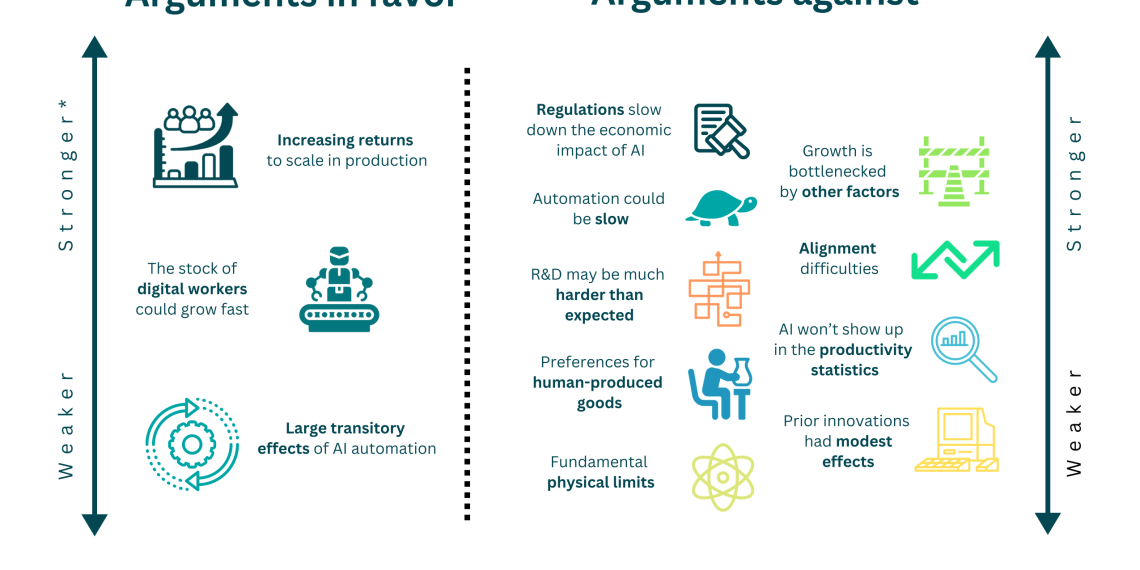this could slow the pace of automation, existing analyses suggest that any gaps between initial economic impact and full automation could be crossed within decades.
- AI Alignment and Control
Difficulties in aligning AI systems with human intentions could limit their economic impact. If a significant portion of tasks (e.g., 25%) can’t be automated due to alignment issues, it could prevent explosive growth. This highlights the importance of investing in AI safety and alignment research.
- Resource Constraints
While some argue that other factors like energy or land could limit AI-driven growth, current evidence suggests these constraints are unlikely to prevent significant expansion in the near term.
- R&D Challenges
The rate of diminishing returns in R&D could potentially limit growth acceleration. However, current estimates suggest this is unlikely to be a decisive factor in blocking explosive growth.
Implications for Business Strategy:
- Prepare for Rapid Change: The potential for explosive growth means businesses should be ready to adapt quickly to an AI-driven economy.
- Invest in AI Capabilities: Early adopters of AI technologies may gain significant competitive advantages.
- Focus on AI Alignment: Ensuring AI systems align with business goals and ethical standards will be crucial for maximizing their economic impact.
- Monitor Regulatory Developments: Stay informed about AI regulations to navigate potential restrictions and opportunities.
- Consider Resource Efficiency: While resource constraints may not immediately limit growth, businesses that optimize resource use could have an edge in an AI-driven economy.
- Prioritize R&D: Despite potential diminishing returns, continued investment in R&D remains crucial for staying competitive.
Conclusion:
The study concludes that there’s about a 50% chance of seeing explosive growth (30% or greater annual growth rates) from AI automation by the end of this century. While this presents enormous opportunities, it also poses significant challenges for businesses.
As AI continues to evolve, business leaders must stay informed about its potential impacts and prepare their organizations for a rapidly changing economic landscape. By understanding these key arguments and their implications, decision-makers can better position their companies to thrive in an AI-driven future.









